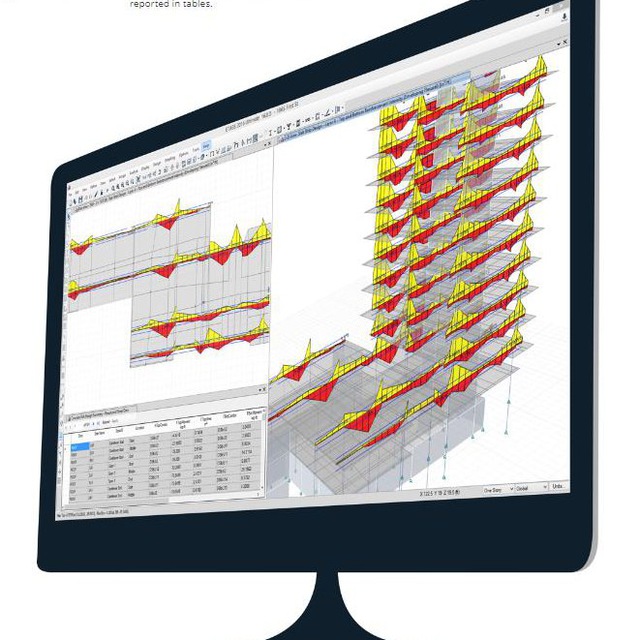Types of #combined loads in ETABS 2016:
When creating combinations of loads, from the path
Define menu>LoadCombination
There are various options in front of the accountant.
By using the mentioned path and clicking on the Add New Combo option, a new load combination can be created. After clicking on the said window option
Load Combination Data
appears In this window and in the section
Load Combination Name
You can choose any name for the load combination
Enter the desired
(You cannot use the word Mode, and all combinations of loads must have a unique name.)
in the department
Load Combination Type
Specify the type of load combination. Its different parts are as follows:
1. Linear Add option:
This option is the most used type of combination of loads and is usually used for design. In this case, different load modes and their effects are algebraically added together.
For example, if in this case the effects caused by the load
D=1 ton, L=1.5 ton and E=-2 ton
be and put them in a cargo composition
D+1.5L+E
put, the given result will be as follows:
D+1.5L+E=1+1.5*1.5-2=1.25 tons
2. Envelope option:
In this case, the nested values are returned. The program is able to provide results as absolute maximum, maximum and minimum.
For example, if in this case it is caused by load
D=1 ton, L=1.5 ton and E=-2 ton
be and put them in the cargo composition
D, 1.5L, E
put, the given result will be as follows:
Maximum:
1.5*1.5=2.25
Minimum:
-2
3. Absolute Add option:
In this case, the values are added together as an absolute value.
For example, if in this case the effects caused by the load
D=1 ton, L=1.5 ton and E=-2 ton
be and put them in the cargo composition
D+1.5L+E
put, the given result will be as follows:
Maximum:
+1*(abs(1)+abs(1.5*1.5)+abs(-2))=5.25
Minimum:
-1*(abs(1)+abs(1.5*1.5)+abs(-2))=-5.25
4. SRSS option:
In this case, the values are combined as the root of the sum of squares.
For example, if in this case the effects caused by the load
D=1 ton, L=1.5 ton and E=-2 ton
be and put them in the cargo composition
D, 1.5L, E
put, the given result will be as follows:
Maximum:
+1*((1)^2+ (1.5*1.5)^2+ (-2)^2)^0.5=3.172
Minimum:
-1*((1)^2+ (1.5*1.5)^2+ (-2)^2)^0.5=-3.172
5. Range Add option:
This combination is added in new versions of ETABS. In maximum combination mode, maximum positive responses are added together and negative responses are not contributed. Also, in the minimum combination mode, the minimum values of the answers with a negative sign are added together, and the answers with a positive value are not included in this mode.
For example, if in this case the effects caused by the load
D=1 ton, L=1.5 ton and E=-2 ton
be and put them in the cargo composition
D+1.5L+E
put, the given result will be as follows:
Maximum:
(1) + (1.5*1.5) = 3.25
Minimum:
-2
(The meaning of the answer in the above text can be diagrams of anchor, shear, axial force, support reactions, etc.)
This post is written by AminNajafgholizadeh
